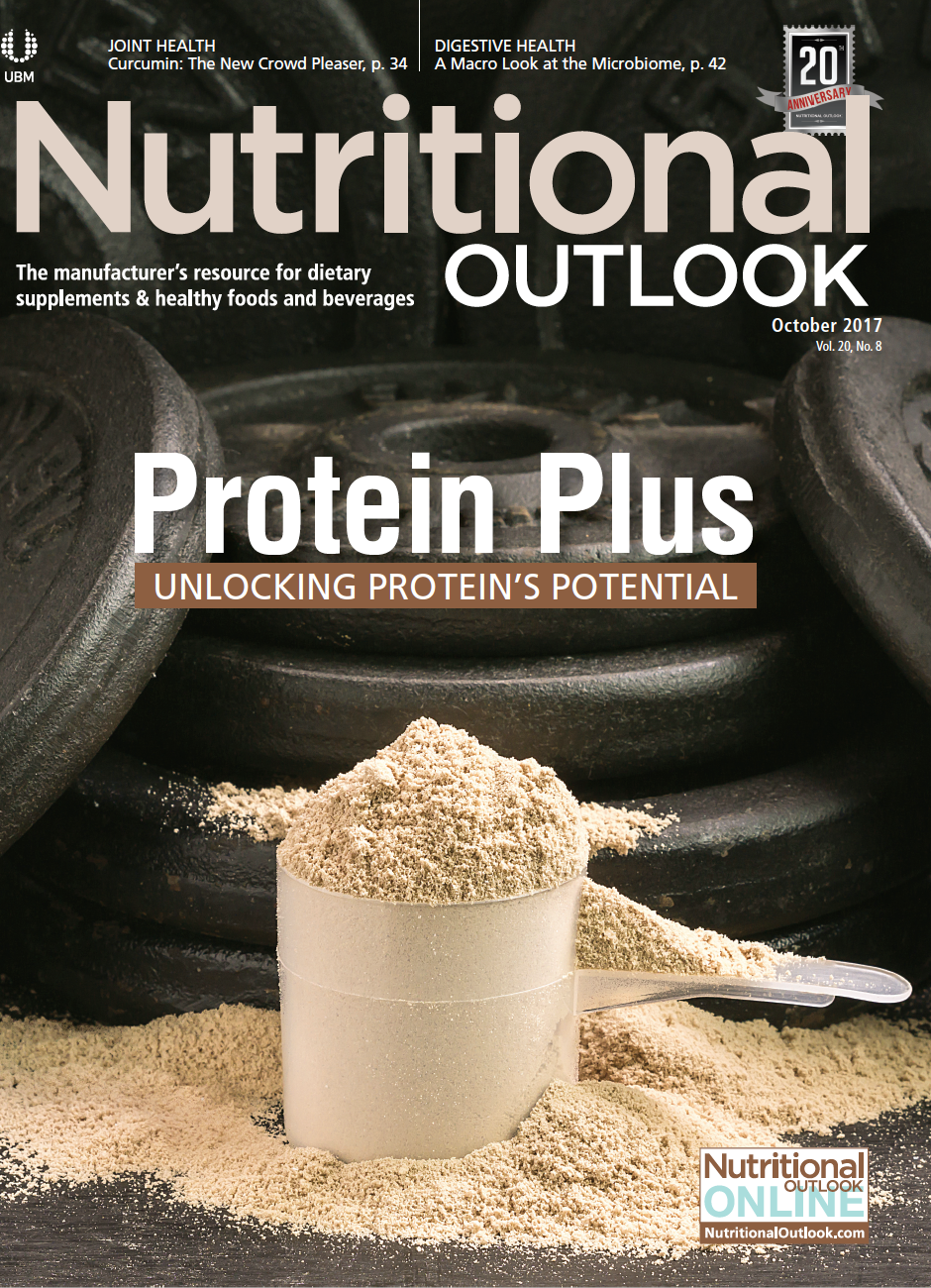Powered Up: Sports Nutrition’s Thriving Product Categories
The number of global sports nutrition product launches has increased significantly, particularly over the past three years or so, according to Innova Market Insights data.
Photo © Shutterstock.com/Minerva Studio

The number of global sports nutrition product launches has increased significantly, particularly over the past three years or so, according to Innova Market Insights data. This increase is largely driven by expanded use beyond traditional strength and endurance sports by a mainstream audience. Mainstream users, including exercisers and those leading active lifestyles, are interested in “performance” products with recreational- and lifestyle-driven positioning mainly to improve their nutritional intake and/or some aspects of health, well-being, performance, muscle growth, and recovery from exercise. Luckily, these consumers will find a growing array of sports nutrition products in mainstream outlets in all major markets, beyond just in gyms and health clubs.
The U.S. sports nutrition market is highly developed. In fact, the U.S. market accounted for 39% of global sports nutrition launches recorded by Innova Market Insights in May 2016-2017, which is a very large market share for just one country. And, actually, this percentage has fallen from over 50% five years previously. Subsequently, sports nutrition interest has increased in other parts of the world, particularly Europe, which has seen launch numbers more than double and now account for a leading 40% share of the global market.
Sports Powders
There are six main sub-categories in sports nutrition. Despite rising demand for more convenient, ready-to-use products in general, sports powders continue to dominate in terms of launch activity, accounting for 49% of global launches in May 2016-2017 (and up to 58% of launches in the U.S.).
Sports powders generally retail in traditional large tubs, although reclosable stand-up pouches have recently become more popular. The most popular flavors for launches are similar to those in the mainstream shake market overall: chocolate, vanilla, and strawberry. Other fruits used singly and in blends in recent launches include orange, lemon, mango, kiwi, passionfruit, and blueberry. Other on-trend flavors in recent months include coconut and coffee, while more complex cookie- and dessert-style flavors are also becoming popular, particularly in the U.S.
Sports Supplements
After sports powders, sports supplements have the highest number of product launches in the United States. In the United States, sports supplements accounted for 15% of total U.S. sports nutrition launches-higher than the global average of just under 12%. The interest in sports supplements aligns with the greater popularity of dietary supplements in the United States in general.
Traditional capsules and tablets are increasingly being joined by chew and gummy formats for ease of consumption, as well as some liquid products, both concentrated and ready to drink. Key ingredients used include specific amino acids and amino acid blends, vitamins and minerals, and omega-3 fatty acids.
Beverages
The rise of the sports and performance drinks market was probably the first indication of a move mainstream for sports nutrition products. The RTD sports drinks market is long established in the U.S., where it is worth approximately US $6.5 billion a year through multiple retailers alone (IRI data). The RTD market is now dominated by the major soft drink companies, with PepsiCo owning Gatorade and Coca-Cola owning Powerade. These brands have continued to compete and drive the market forward with ongoing new product activity, focusing on developing more targeted products as well as a range of flavors and formats, including the release of limited editions.
Interest in energy drinks took some of the focus away from the more mature sports drinks market in the mid-2000s, but the sports drinks market endured, spurred by the development of more targeted products and the launch of “light” varieties. More recently, the emphasis on performance and the booming interest in protein drinks has regenerated interest in the sector, especially from more casual users looking for products for a healthy lifestyle.
There may be a relative lack of innovation opportunities, however, as the number of RTD sport drinks launches are limited in comparison with some other parts of the sports nutrition market. Ready-to-drink sports drinks accounted for just 6.5% of U.S. sports nutrition launches in May 2016-2017, with the smaller and newer protein sports drinks sub-category responsible for a further 4.7%.
Sports Bars
Sports bars is another sub-category that has benefited from the rising interest in protein, not only in the performance sector but also in the food and drinks industry as a whole. In terms of launch activity in the U.S., sports bars took the number-three spot, accounting for 9% of sports nutrition product launches-behind sports powders and sports supplements. Nearly 88% of sports bar launches in May 2016-2017 were positioned on an “added protein,” “high in protein,” or “source of protein” platform.
Many sports bars take advantage of multiple marketing claims, including clean-label claims about no artificial colors, flavors, or sweeteners; “free from” claims such as gluten-free and non-GMO; and now, with the overall rise in interest in vegan diets, vegan-friendly claims. Examples of recent launches in the U.S. include Powerbar’s Clean Whey Bar and Cytosport’s Muscle Milk Protein Bar, as well as Hammer Nutrition’s Vegan Protein Bar.
Developing, Diversifying
In general, the sports nutrition sector continues to expand and diversify. The range of products is growing, with more mainstream options for everyday activity growing alongside demand for specialized products targeting more specific strength and endurance needs.
Innova Market Insights is your source for new-product data. The Innova Database (www.innovadatabase.com) is the product of choice for the whole product-development team, offering excellent product pictures, search possibilities, and analysis. See what food manufacturers are doing around the world: track trends, competitors, ingredients, and flavors. In today’s fast-moving environment, this is a resource you cannot afford to be without.
Also read:
Sports Nutrition Powders Still Strong in 2017

Prinova acquires Aplinova to further increase its footprint in Latin America
April 7th 2025Prinova has recently announced the acquisition of Brazilian ingredients distributor Aplinova, which is a provider of specialty ingredients for a range of market segments that include food, beverage, supplements, and personal care.

























